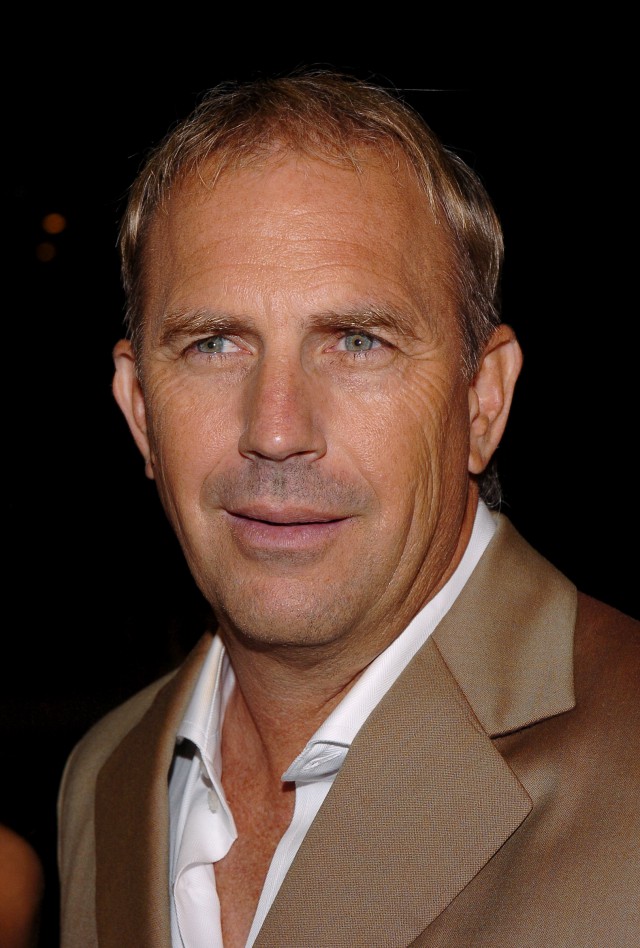
Costner has invested 15 years and about
in a novel way of sifting oil spills that he began working on while
making his own maritime film, “Waterworld,” released in 1995.
Two decades later, BP and the U.S. Coast Guard plan
to test six of his massive, stainless steel centrifugal oil separators
next week. Plaquemines Parish President
officials blasted the U.S. Army Corps of Engineers for delays in
approving an emergency plan to build sand “islands” to protect the
bayous of his parish.
“It certainly is an odd thing to see a ‘Kevin Costner’ and a ‘centrifugal oil separator’ together in a place like the
who is producing a documentary about the oil spill and Costner’s
device. “But, hey, some of the best ideas sometimes come from the
strangest places.”
Meanwhile, “Avatar” director
Council, that uses the spill as a clarion call to move forward on clean
energy.
It is not the first time
a versatile ventriloquist and the voice of Tigger in “Winnie the Pooh,”
was also an inventor who patented an early artificial heart in the
1960s. In 1940, glamorous movie star
Costner was unavailable for comment. But his business partner,
said, “Yes, Kevin is a star, but he took his stardom and wrote all the
checks for this project out of his own pocket. This was one man’s
vision.”
Details of any contractual relationship with BP were not disclosed. Asked if the actor would charge for use of the machines,
Houghtaling said Costner bought the technology, which was originally developed with help from the
“The machines are essentially like big vacuum
cleaners, which sit on barges and suck up oily water and spin it around
at high speed,” Houghtaling said. “On one side, it spits out pure oil,
which can be recovered. The other side spits out 99 percent pure water.”
If all goes according to plan, he said, “We could
have as many as 26 machines dispatched throughout the gulf. Our largest
machine is 112 inches high, weighs 2 1/2 tons and cleans 210,000
gallons a day of oily water. We are hoping to have 10 machines that
size out there — meaning we could potentially clean 2 million gallons
of oil water a day.”
That kind of talk has intrigued BP, the party
responsible for the well blowout that caused an explosion on the
Deepwater Horizon on
triggering one of the largest oil spills in U.S. history. “BP has
agreed to test Mr. Costner’s machines,” BP spokesman
With oil washing up on a portion of southeastern
swampy edges, word of Costner’s devices and their potential
capabilities has triggered intense lobbying over where they should be
stationed first.
High on the list of prospective sites is
where “we’ve already lost 24 miles of marshland,” Nungesser said.
“Everything in it — frogs, crickets, fish and plant life — is dead and
never coming back.”
Houghtaling said he was working on a deployment
strategy. “Some people want the machines placed out on the blue ocean
where the oil is surfacing. Others want them placed along the
coastline.”
In the meantime, frustration is escalating over the
U.S. Army Corps of Engineers’ delay in authorizing dredging to build a
chain of barrier islands with sand to protect sensitive coastal areas.
Parish leaders,
a member of the Senate committee that oversees the Corps, demanded
immediate approval of the plan they estimated could cost about
“The Corps just doesn’t get it,” Vitter said in a
statement. “Thick oil has already gotten behind our existing barrier
islands and is infiltrating our marsh. Yet the Corps has no sense of
emergency.”
Corps spokesman
that the agency is using emergency rules to expedite the request, but
that it still has to comply with national environmental laws, including
soliciting comments from other agencies.
Nungesser dispatched an urgent request to the Obama
administration to force the Corps to expedite its review process. He
also reached out to Costner, the man of the hour in
“I have Kevin Costner’s cell phone number and I’m
going to call him and ask him to hold a press conference about the
Corps’ lack of response in this time of emergency,” Nungesser said. “He
is a caring man, and people know and respect him. Maybe he can help us.”
———
(c) 2010, Los Angeles Times.
Visit the Los Angeles Times on the Internet at http://www.latimes.com/
Distributed by McClatchy-Tribune Information Services.














